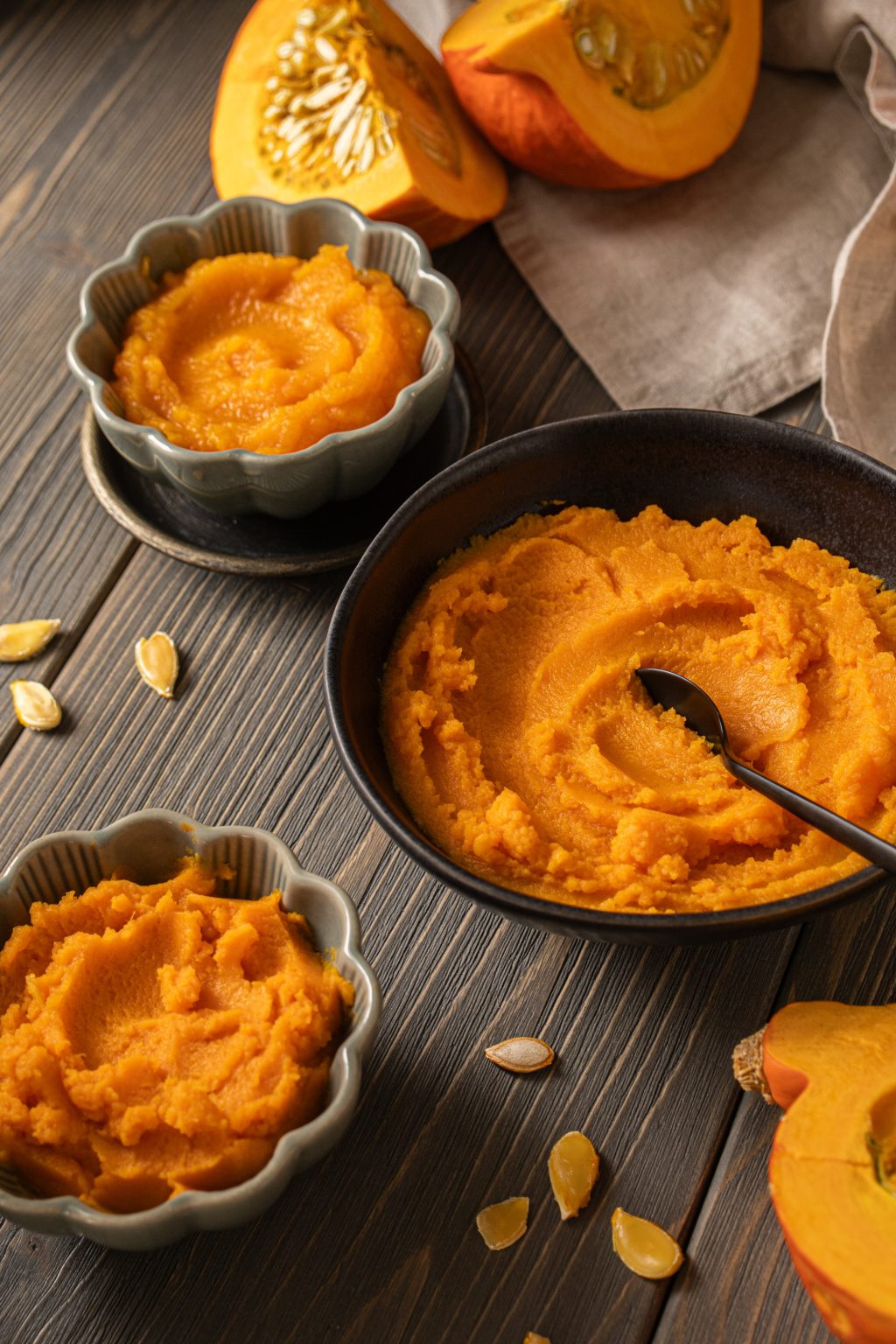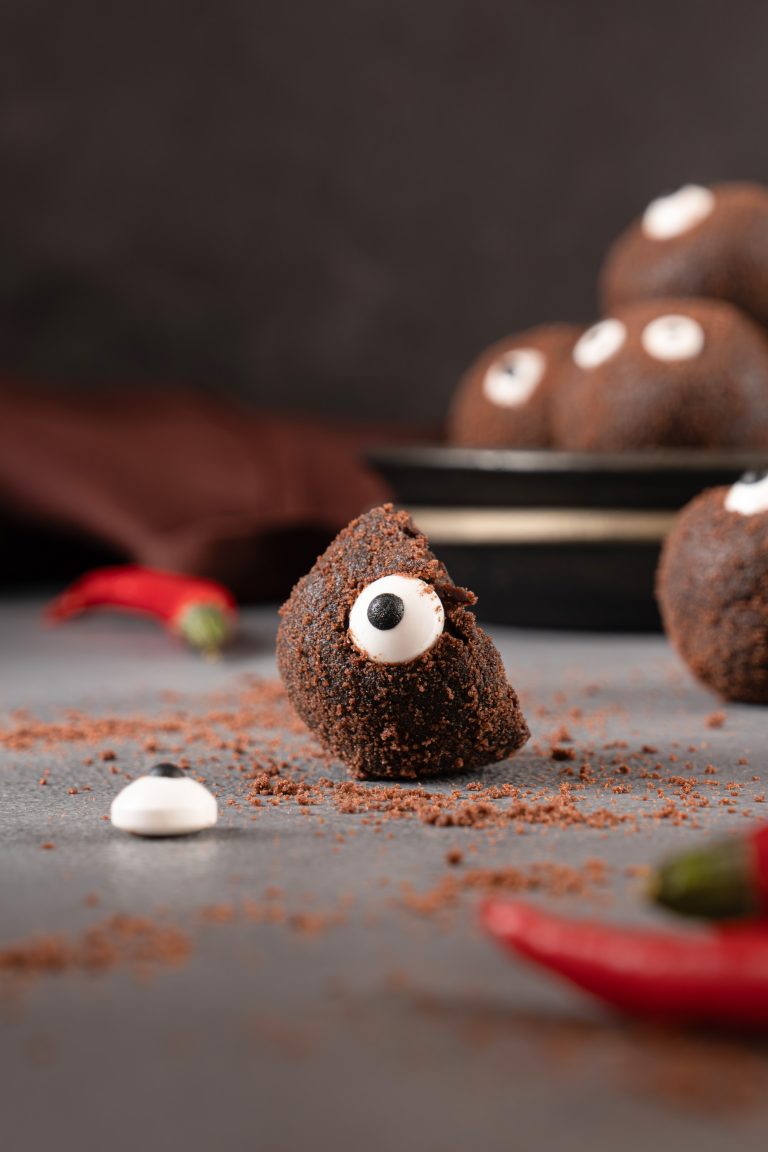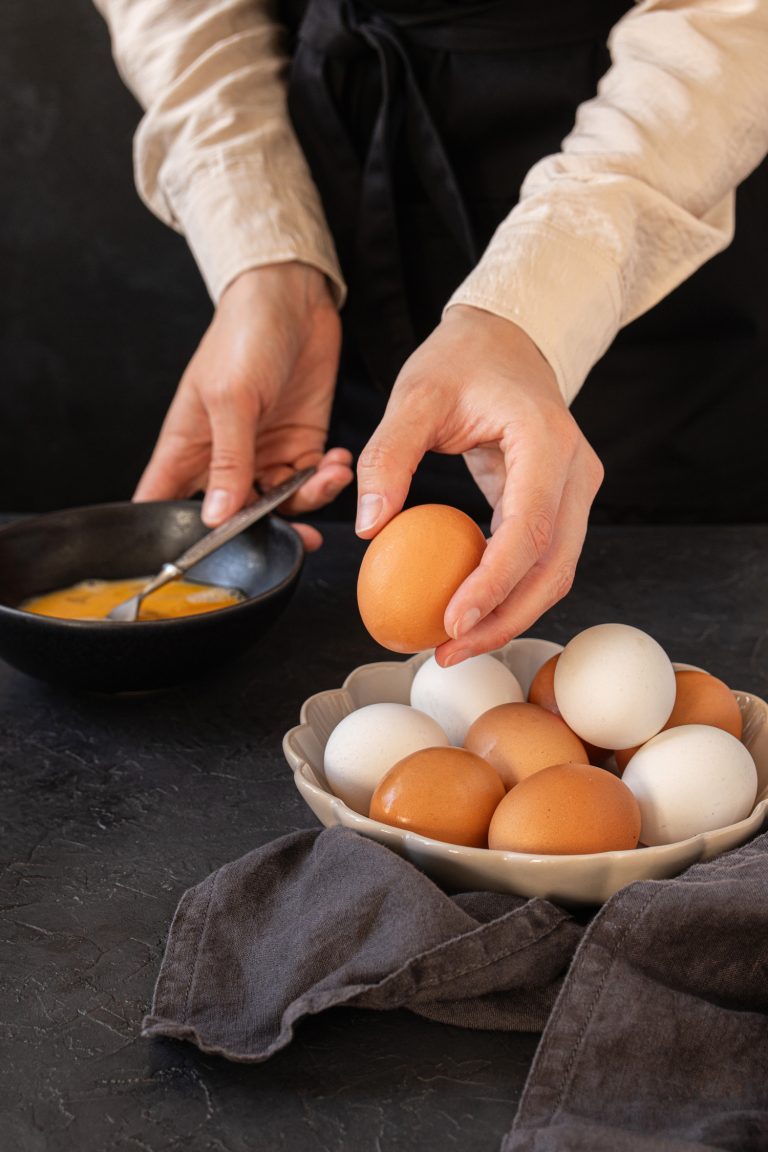Autumn brings a bounty of pumpkins to our markets and kitchens. One great way to embrace this seasonal treasure is by making some homemade pumpkin puree for your autumn bakes. So grab the pumpkin resting on your windowsill, and let’s fill some jars with its rich flavor.
Why make pumpkin puree at home?
Like me, you might live in an area where canned pumpkin puree is unavailable, but you still want to bake something with pumpkins. Perhaps you have a surplus of pumpkins from your aunt’s garden that you’d like to preserve for later use. Also, making something from scratch at home can be enjoyable, and in this case, it’s also quite easy!
Where to use homemade pumpkin puree?
Add it to soups, sauces, your morning porridge, pancake batter, and of course, bake something with it. Pumpkin adds a beautiful color, plenty of moisture, and a soft texture to baked goods. Don’t worry — your cake won’t taste like a savory vegetable dish.
Here are a few recipe ideas for you:
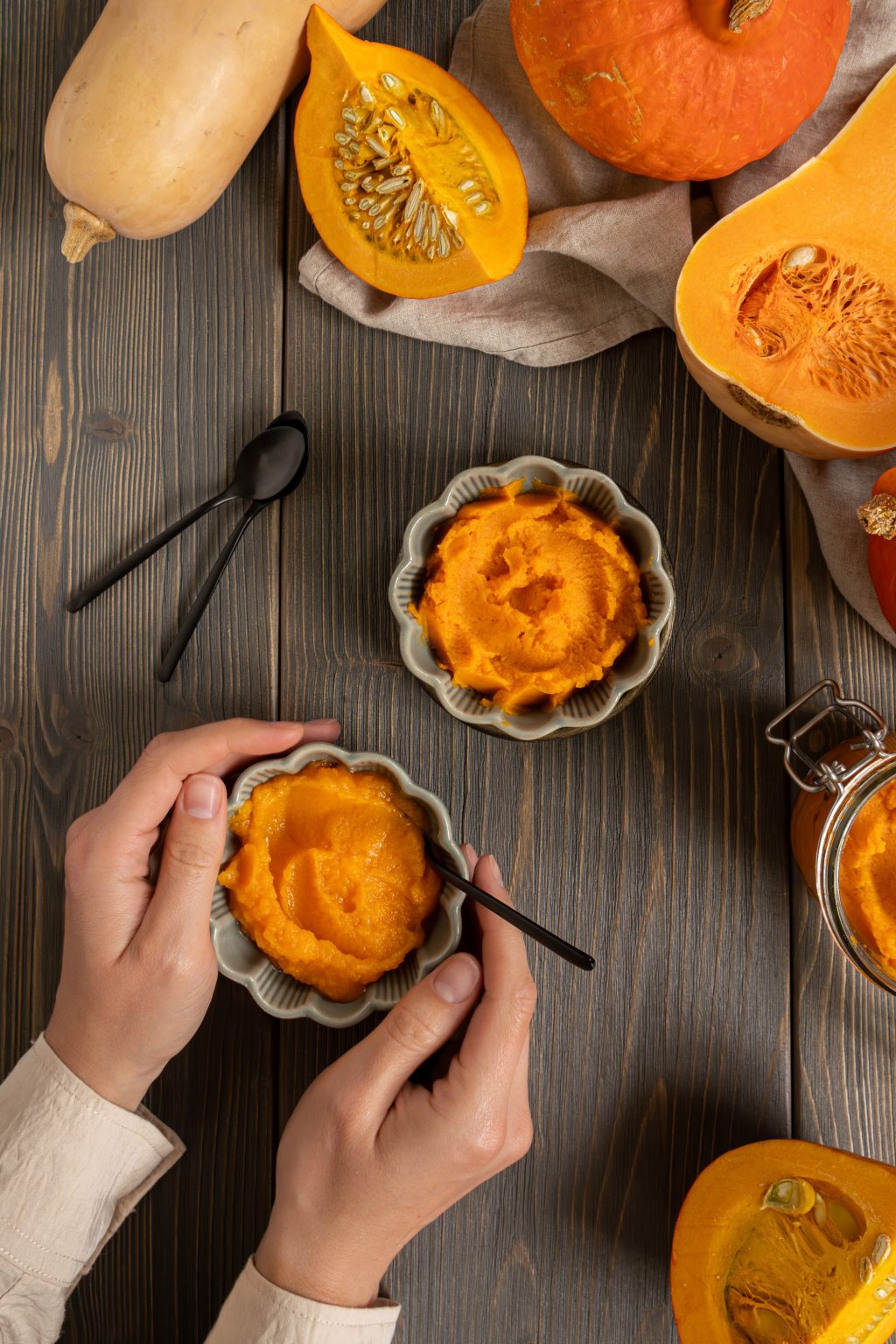
What types of pumpkins are best for pumpkin puree?
Technically, you can roast and blend any type of pumpkin, but for the best puree, choose smaller pumpkin varieties. My top recommendation is butternut squash: it’s sweet, not watery, flavorful, has fewer seeds and more flesh than round pumpkins, and is available year-round. Other good options are: sugar pumpkins, Hokkaido (red kuri squash), Musquée de Provence (fairytale pumpkin). Avoid using large “Jack-o’-Lantern” carving pumpkins, as they tend to be watery and bland.
Should you strain your homemade pumpkin puree?
The type of pumpkin you choose will affect how watery the pumpkin puree is. If you plan to use it in soups or sauces, the excess liquid isn’t a problem, so you can skip the straining. However, if you plan to use it for baking, too much moisture can significantly affect the results, so straining it is a good idea.

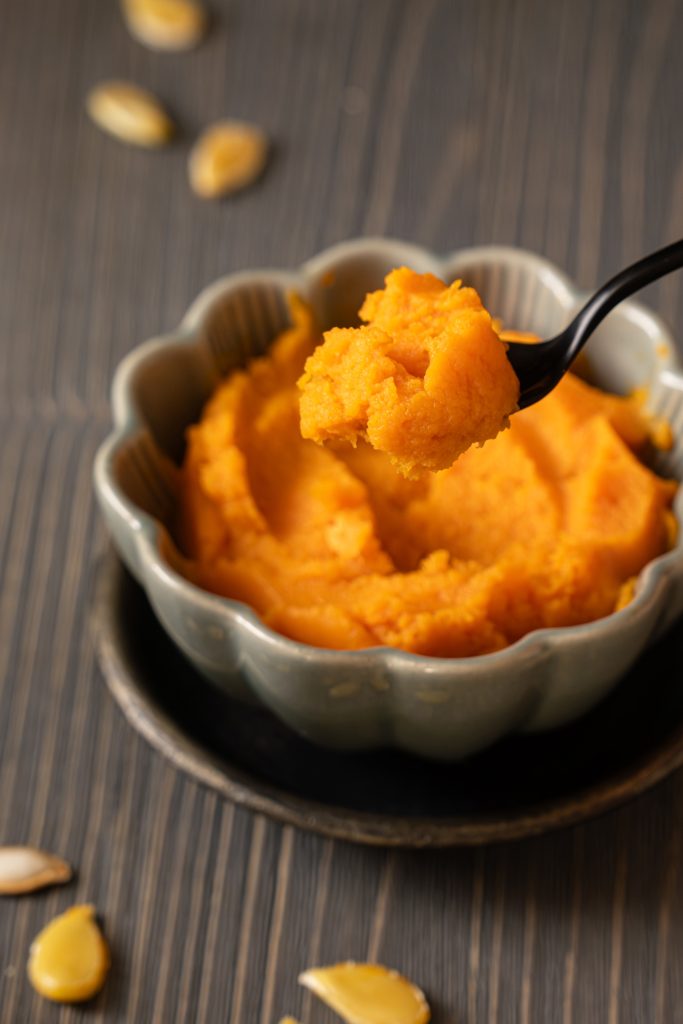
Pumpkin puree made of butternut squash, unstrained.
Pumpkin puree made of butternut squash, strained.
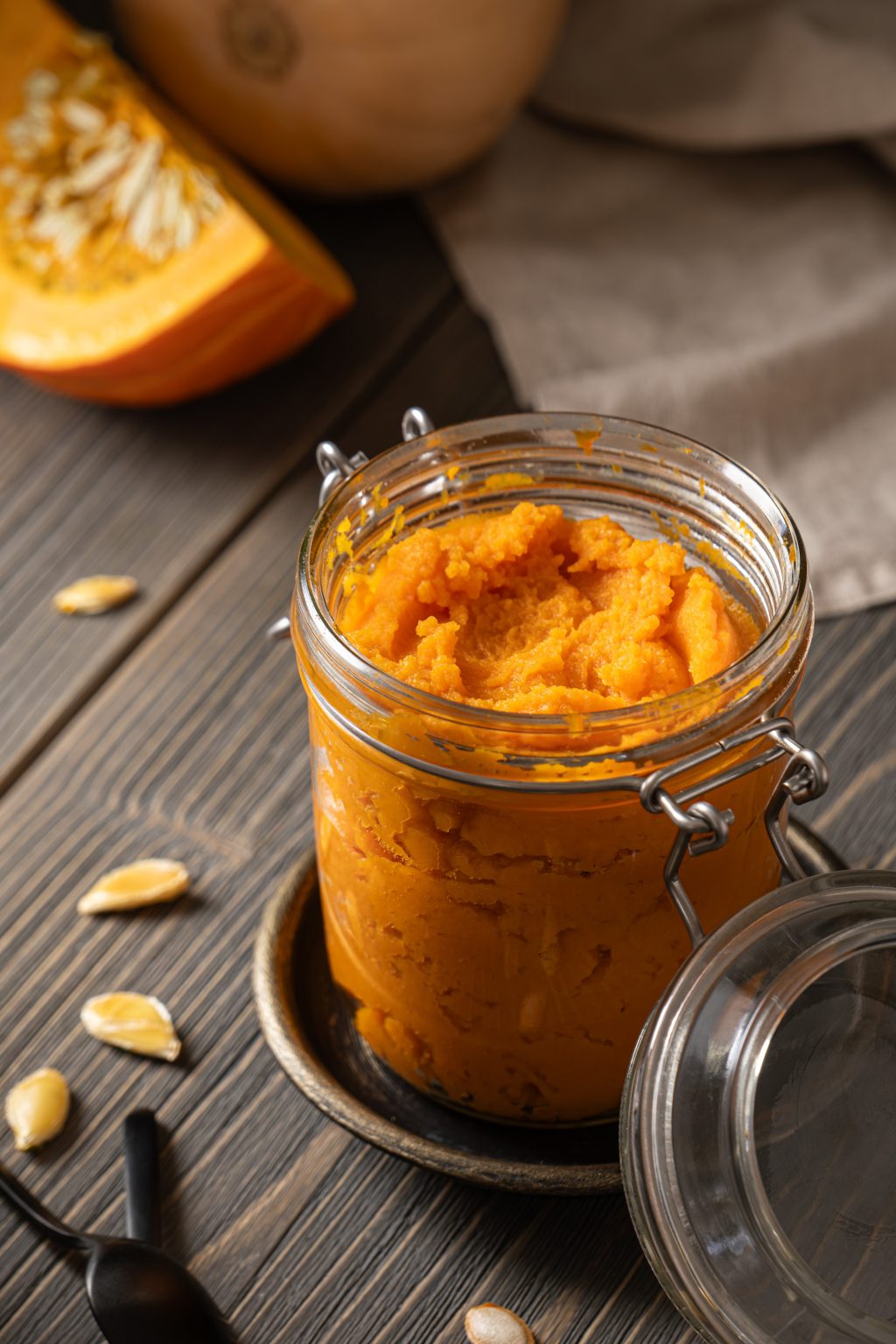
Homemade Pumpkin Puree
- Beginner Friendly
Simple, natural, pure pumpkin puree you can easily make at home and use in any fall baking recipe.
Perform time: 20 min
Bake time: 60 min
Total time: 1 h 20 min
Ingredients
- 1 butternut squash
Directions
1.
Preheat the oven to 180°C / 350°F.
2.
Thoroughly wash the squash. Cut off the stem end, then halve it. If you are using a round pumpkin with a thick stem, avoid cutting through the stem as it is too hard. Instead, cut down one side from the stem to the bottom, then cut down the other side. Carefully pull the two halves apart, and the stem should break away easily.
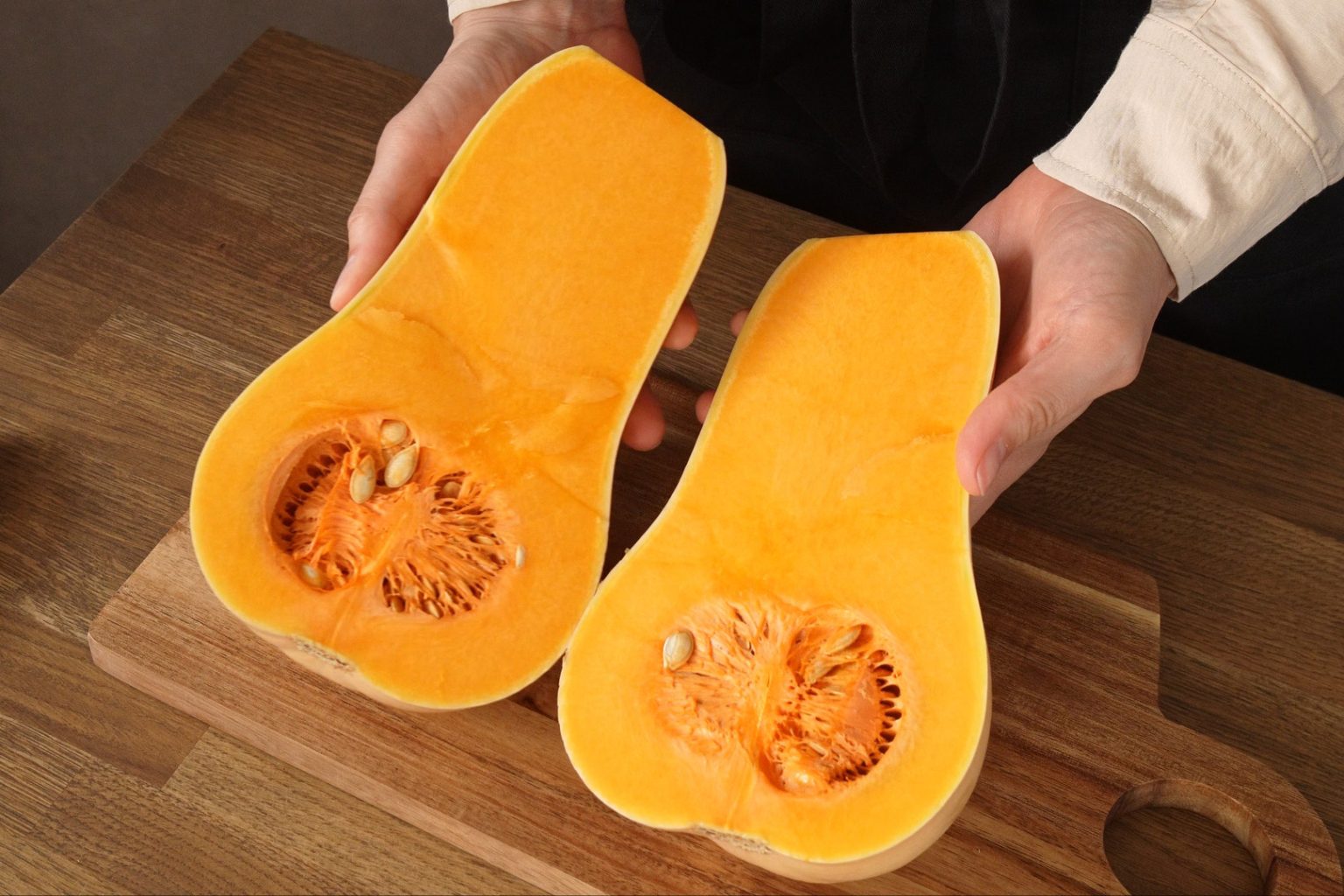
3.
Remove the seeds by scooping them out.

4.
Place the squash halves, cut side down, on a baking sheet lined with parchment paper. Roast them in the oven for about an hour or until the squash gets soft.

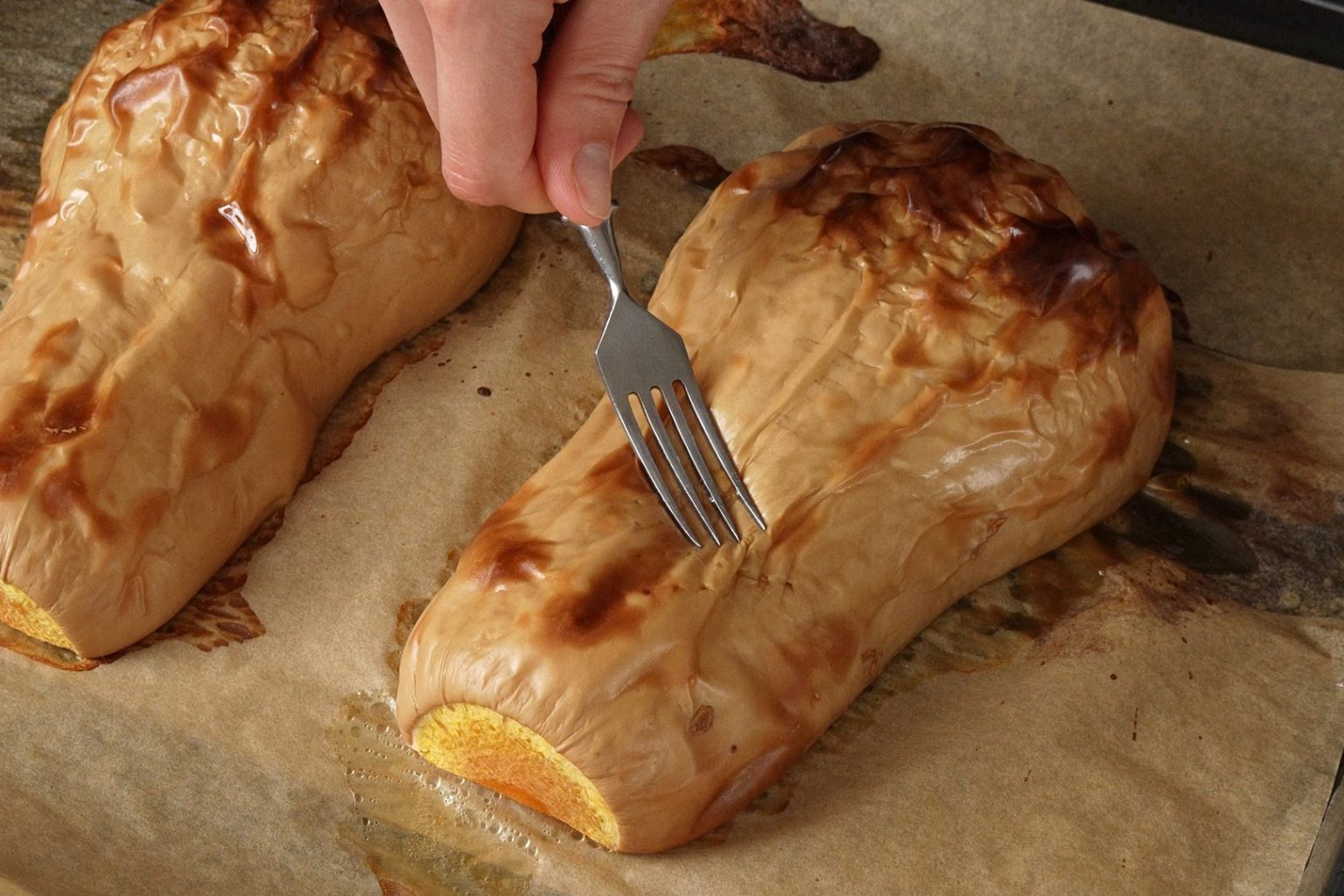
5.
Let the squash cool until it is cool enough to handle. Then, use a spoon to scoop the flesh into a food processor or blender bowl.
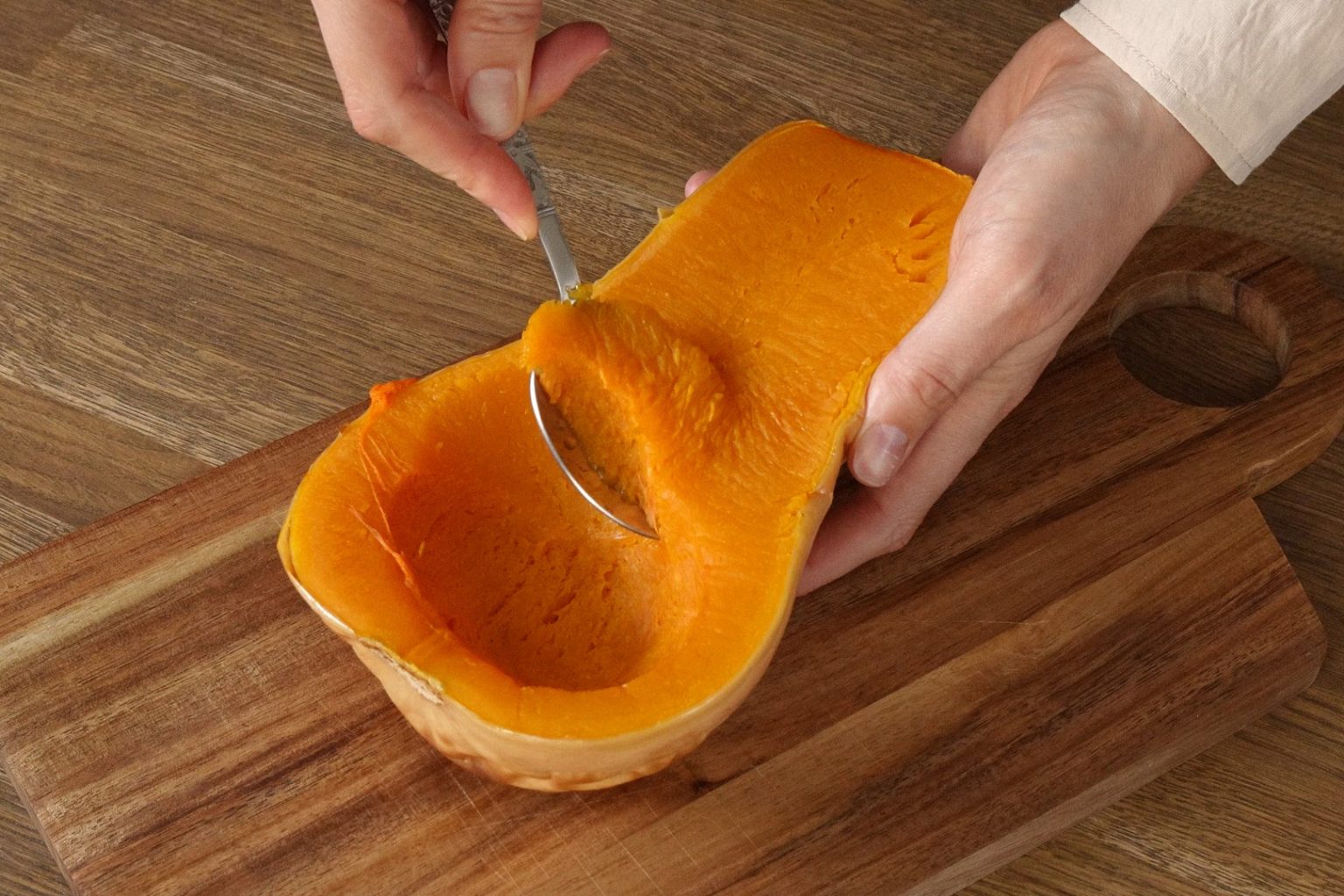

6.
Blend until smooth.
7.
Place a metal strainer on top of a bowl and line it with 3 layers of clean cheesecloth. Pour the pureed squash into the cheesecloth.

8.
Tie the loose ends of the cheesecloth into a knot, then press out the excess liquid with your hands.

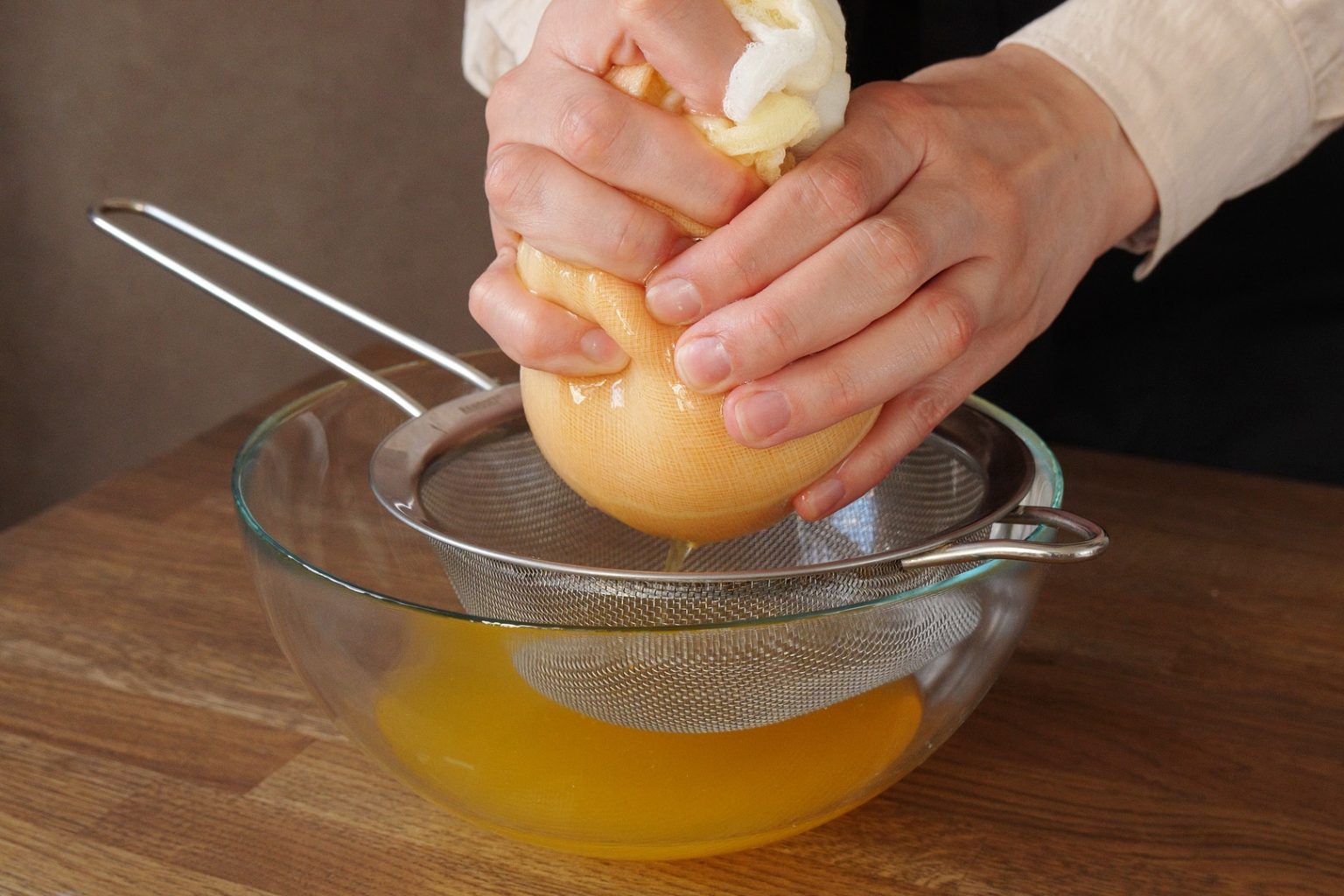
9.
Remove the puree from the cheesecloth and use it in a recipe, or transfer it to an airtight container for storage.
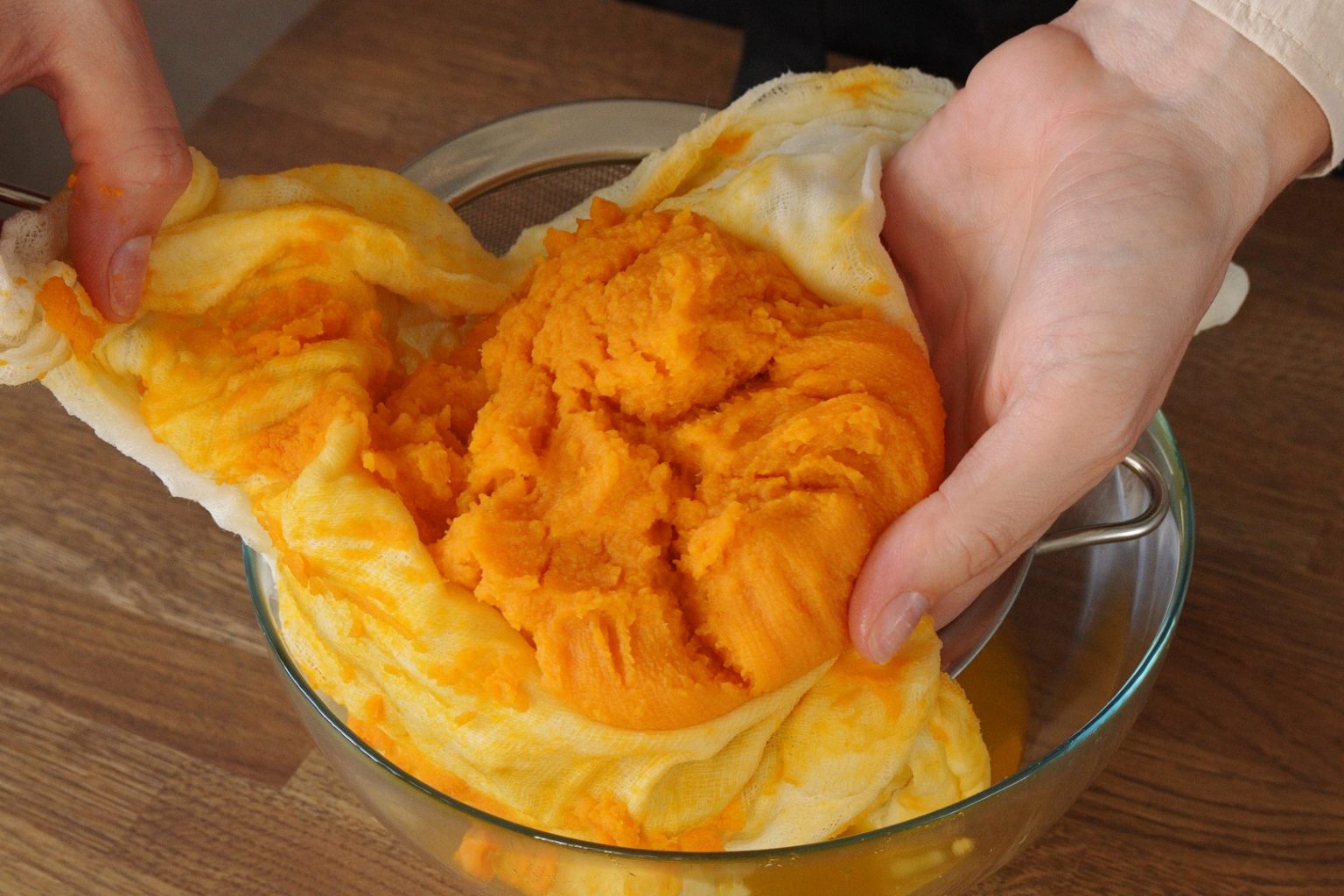
Extra tips for success
- Always roast the squash in the oven; don’t boil or steam it on the stove. The dry heat of the oven allows the squash to reach a higher temperature, which causes reactions that deepen the flavor and allow more water to evaporate.
- Roasted squash is very soft, so any type of blender, including a stick blender, can easily handle it.
- The final yield will depend greatly on the size and type of pumpkin used. For example, from a 1.7 kg butternut squash (including peel and seeds), I end up with around 350 g of strained pumpkin puree.
Storage directions
Store pumpkin puree in an airtight container in the fridge for up to a week or freeze in portions for up to 6 months.
